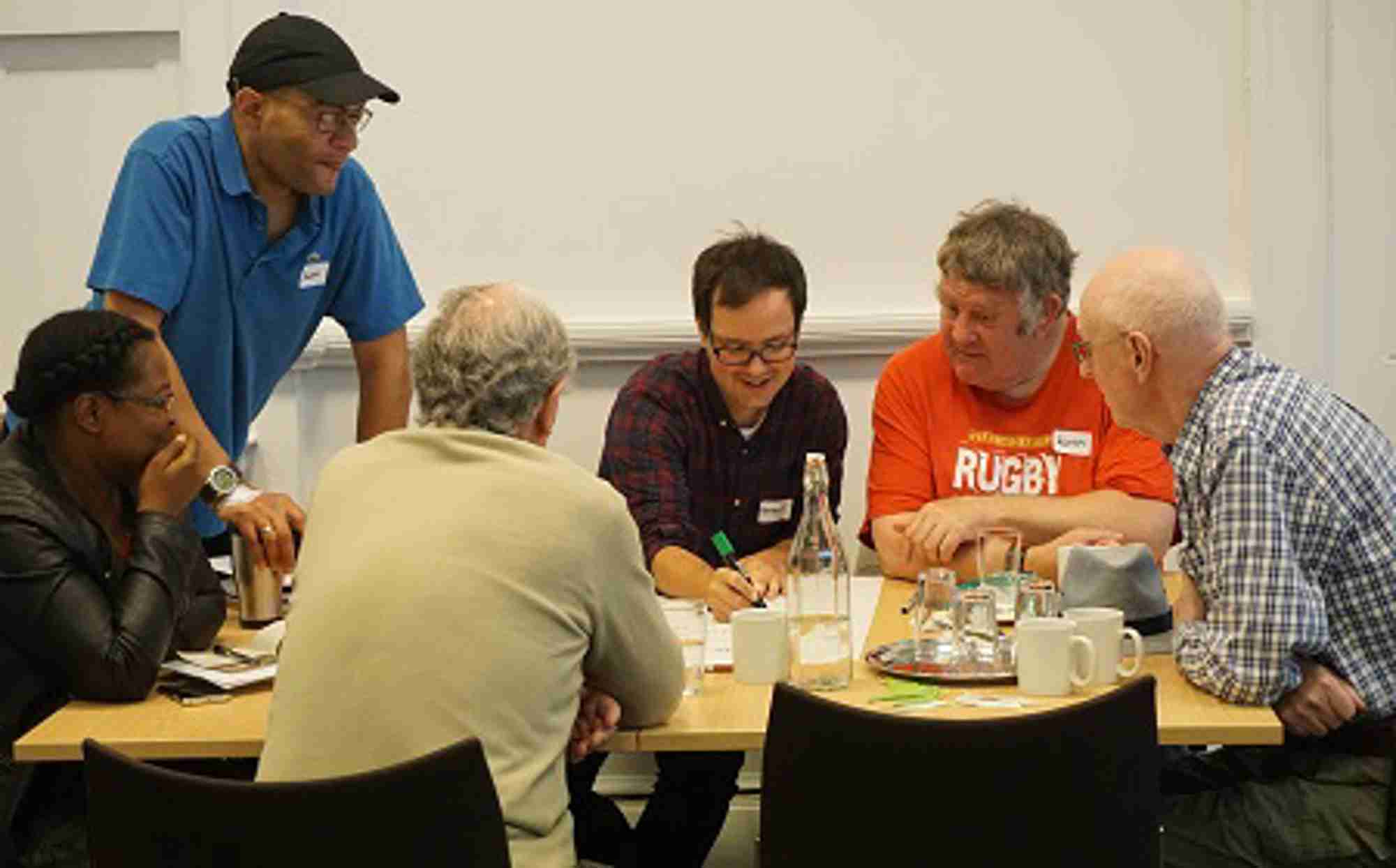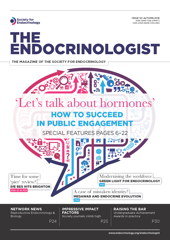Recognising the valuable insights that patients, carers and the wider public can bring, public involvement is increasingly regarded as an essential component of designing and delivering health research, increasing its relevance, quality and impact. Nonetheless, despite a growing body of evidence about the theory and practice of public involvement, uncertainties remain about how to do it well.

Patients and resarchers come together at a workshop to discuss future research angles for using online self-monitoring tools for diabetes and chronic kidney disease (C) L.Hassan
EXPERTS BY EXPERIENCE
It is a clear, bright morning in June at a research design workshop held by The University of Manchester. Although the break has just been announced, one small group remains huddled in discussion, seemingly oblivious to those rising from their seats around them. Before them are a series of scientific papers, graphs and tables. One man leans in, eagerly tapping the pages to point out trends and outliers in the data. He seems well-informed about type 1 diabetes, and so he is. As a patient, he has lived with the condition for over 50 years, and has conducted his own research using publicly available data.
At today’s event, people with diabetes, chronic kidney disease or both conditions (as the two often coincide) have been invited to discuss the future of online self-management tools for patients. Expert patients and researchers are facilitating the discussions side by side, learning from each other and hoping to gain insights into what types of research and development on such systems might be most relevant and useful.
WHAT IS (AND ISN’T) PUBLIC INVOLVEMENT?
'Rather than providing data, people who are involved in research provide insight, advice and expertise based on their own lived experience of health conditions and/or services'
INVOLVE – part of the National Institute for Health Research and a high profile advocate of public involvement in research – defines involvement as ‘research being carried out “with” or “by” members of the public rather than “to”, “about” or “for” them’. Crucially, this distinguishes involvement from taking part in research as a participant. Rather than providing data, people who are involved in research provide insight, advice and expertise based on their own lived experience of health conditions and/or services from their perspectives as patients, family members or carers.
Some people distinguish public involvement from public engagement. The latter term is typically used to describe activities that promote awareness and discussion about health and research. Nonetheless, others have argued that the distinction should not be made too sharply, given that both can involve dialogue, mutual learning and collaboration.
CRITICAL FRIENDS, MUTUAL BENEFITS
There are moral, ethical and practical arguments for public involvement in research. Some might argue that the public have a moral and ethical right to have a say regarding publicly funded research. Indeed, public involvement may drive research along lines of enquiry that are more relevant and appropriate to public concerns. The James Lind Alliance is one initiative that enables the public to shape the health research agenda. Patients, carers and clinicians are teamed up to identify future research priorities for specific health areas that are important to all groups (often presented as ‘top 10s’). These are then published and publicised to ensure researchers and funders alike understand the issues that matter most to patients.
It is also thought that, under the right circumstances, public involvement can improve the quality and impact of research. For example, public involvement can lead to more appropriate participant information and user-friendly data collection methods. Although the evidence base is still emerging, some studies have reported positive outcomes from public involvement, including enhanced recruitment rates.
CASE STUDY: PATIENTS TURNED RESEARCHERS
An innovative study has seen patients turn researchers to tackle a James Lind Alliance prioritised research topic. A group of people with experience of diabetes approached researchers Debbie Smith and Alison Wearden at The University of Manchester to investigate the experiences of self-management for people living with well controlled type 1 diabetes. The researchers took on the challenge whilst adding a novel twist. Instead of collecting the data themselves, they trained five people with personal experience of diabetes to conduct qualitative interviews. Analysis and interpretation of the data were also conducted by the patients and the researchers in collaboration. These design choices, the researchers argue, added a new dimension to the findings: ‘The collaboration resulted in a great study, as we all had different levels of expertise, and sharing this as a research team was an exciting learning experience’. The results are currently being prepared for publication, co-authored by patients.
|
SHAPES AND SIZES
Public involvement can take many forms, depending on the particular research area. Members of the public may, for example, be asked to join advisory panels or serve on steering committees, influencing strategic-level decisions about research topics and design.
Involvement can also be more ‘hands on’, with citizens working alongside researchers on particular projects to design or ‘co-produce’ elements of the research, such as protocols, participant recruitment materials or reports on findings. With the right training and support, some projects may allow opportunities for members of the public to take on roles as co-researchers or even lead the research themselves (see box on the left).
Public involvement is a multifaceted and complex social process, making it difficult to truly isolate causes, effects and impacts. Nonetheless, reviews have suggested that the right ‘ingredients’ for genuine (rather than tokenistic) involvement may include dedicated support, a sense of collective responsibility, investment in relationship building and evaluation.
THE ROAD AHEAD
Meaningful public involvement offers an opportunity to harness the expertise of patients, carers and the wider public to improve research. Increasingly this is regarded as a pre-requisite for research funding and there are signs that this may extend to publishing; indeed, the BMJ now requires authors of research papers to state how they involved patients in design, delivery and dissemination. Whilst much remains to be evaluated and explored, the potential rewards at stake are ready for the taking.
Lamiece Hassan
Public Involvement Research Officer, Health eResearch Centre, The University of Manchester
Twitter: @LamieceHassan
For further information see:
INVOLVE
James Lind Alliance







